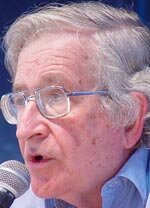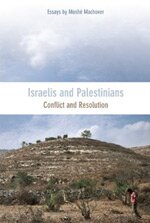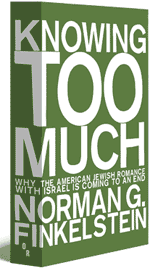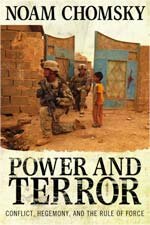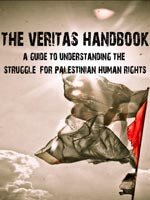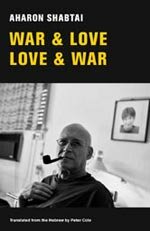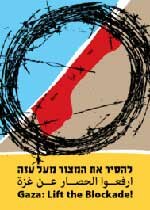By Ellen Cantarow, Israeli Occupation Archive – 4 Oct 2011
Review of Eyes in Gaza, by Mads Gilbert and Erik Fosse, translated from Norwegian by Guy Puzey and Frank Stewart, Quartet Books: London, 2010.
During Israel’s 23-day war on Gaza (December, 2008 through January, 2009), an Israeli plane dropped seven bombs outside the home of a six-year old boy named Essidin. The child arrived by ambulance at al-Shifa Hospital in Gaza City.
“The boy had received life-threatening shrapnel wounds to the abdomen and the chest and was operated upon as soon as he came to al-Shifa. He . . . had a substantial stomach probe, as well as a thoracic drain and a large bandage to cover the central incision the surgeons had made when they opened his abdomen in order to stop the life-threatening haemorrhages. The boy’s breathing was calm but shallow, due to the painful operation wound. He was wearing a khaki shirt adorned with colourful military emblems — one read ‘Old Navy.’ His sheet had slid down, and he rested his head on the grey plastic hospital mattress cover. . .
“Essidin stared at me with a completely motionless gaze. He had beautiful brown eyes, but they were dilated and wore a shocked expression.
“‘What happened? What am I doing here, and who are you?’ his eyes asked silently.”[1]
Eyes in Gaza, from which the above passage is drawn, reminds us why Israel and the US have been terrified that Palestine’s success at the UN would mean accountability for Israel. It shows why 80 percent of the Arab world considers Israel the world’s most dangerous country, and why even certain policy-makers in high US places are beginning to mutter about Israel’s being a liability to the US in America’s current economic crisis. This book has never been reviewed in the mainstream US press — no doubt because it is an act of literary resistance to US-Israeli apologetics for the war Israel ghoulishly nicknamed “Cast Lead.” It chronicles the days and nights Norwegian doctors Mads Gilbert and Erik Fosse, sent to Gaza by the Norwegian Aid Society, spent beside their Palestinian medical colleagues in Gaza’s main teaching hospital, Al-Shifa. The book is based on the notes and journals its authors wrote late at night; on photographs, videos, the conversations they had during their time there; and inquiries they carried out later in the news media and other sources.[2] Israel blocked all Western journalists from entering Gaza. There were no Western doctors before the authors arrived on New Year’s Eve, December 31.
The wounded and the dying poured into Al-Shifa’s emergency room daily from Gaza City’s densely-populated dwellings; from homes in Jabalya Refugee Camp; from mosques; from the UN school in Jabalya; from Gaza City’s central vegetable market — all areas packed with civilians. The doctors observe both in the book and in press interviews that the patients they saw were all civilians, among them many children. They also discuss the use of dense inert metal explosives which inflict gruesome, often inoperable wounds: at least two victims of DIME are presented in the book.[3]
Gaza is an immense prison, 1.5 million people squeezed into 140 square miles caged on three sides by Israel’s 25-foot-high walls and electronic fencing, and on the sea by Israel’s military. At the start of the war Gaza was entering its third year of a siege imposed by Israel and the US when Palestinians voted Hamas into power in 2006, an insult unexpected, but quickly punished by the Middle East’s “only democracy” and its US patron. The siege and its impact on Gaza’s medical services receive a chapter of their own in Eyes in Gaza (“Distress by Design”); frequent allusions to the effects of the siege on Gaza’s medical capacities stud the narratives.
The doctors’ entry into Gaza was facilitated by Norway’s Foreign Ministry. Gilbert is an anesthesiologist and heads the emergency medical department of University Hospital of North Norway. Erik Fosse is a surgeon and Professor of Medicine at the University of Oslo. There were plenty of Palestinian journalists, doctors, and civilian eye-witnesses. But these are non-persons in the courts of Western opinion.[4] A German Der Spiegel journalist said in a phone interview with Fosse that even the wounded and dying children arriving at Al-Shifa were “mainly Hamas children.” (She was passing on a phrase used by an Israeli Defense Force spokesman.)[5]
Thus, in addition to their medical work the physicians were responsible for being witnesses from within — eyes in Gaza. How they entered across the Egyptian border, who helped them, how they were able to secure other Norwegian medical personnel to take over before they left, are bookends for a series of lacerating and mesmerizing narratives about their work in Al-Shifa. The physicians are gifted writers with a singular ability to couch clinical description (wounds; patients; surgical procedures; the layout of Al-Shifa itself) in the forward thrust and sweep of a novel.
- “Sunday was a terrible day.
“On Sunday, Israeli forces killed two young Palestinian boys who were playing on a roof.
“On Sunday, Israeli aircraft also bombed the vegetable market in the middle of the busiest shopping area of Gaza City.
“On Sunday, we received wave after wave of people frightened to death, some uninjured, some wounded, some dying and some dead — of all ages, with every kind of injury…They had one thing in common: they were all Palestinian civilians…. Devastated human bodies were everywhere. On the floor, on stretchers, on tables, in the resuscitation room, behind curtains, and there were walking wounded with bleeding injuries.
“A dying pregnant woman. Children with recent amputations. The noise rose and fell . . . a numbing cascade of voices and cries, commands, outbursts, despairs and moans.”[6]
- “At first I didn’t realize the background to the case. The little nine month old girl I had been asked to attend to was just an early warning. She was pale and ill-looking after the anaesthetic and was almost unarousable . . . Parts of her tiny little left hand had had to be amputated after the nasty injury she had sustained in the family house. Nobody knew where her mother was, but her father and grandfather must have been killed.”[7]
- “We could see that the splinter had gone on through the liver and into the duodenum, which had a three centimeter tear on the anterior surface. Dark blood was welling out through the tear in the bowel. It must be coming from a major vein. I freed the duodenum and was able to see a tear in the inferior vena cava, which brings all the blood from the lower part of the body back to the heart. We packed a lot of compresses in against the vein and managed to stop the bleeding for the time being . . .”[8]
Passages like these are relieved by others about gallows-humor sessions with the authors’ Palestinian colleagues; shared meals; scenes of medical personnel at prayer; the authors’ urgent efforts to get messages out to the Western press and their own families.
The book’s 120 photographs (most are the authors’) are interspersed throughout, illustrating appropriate passages rather than being collected in a separate section. Some are so grisly that I had to take breaks in my reading. The photographs’ sub-headings provide narratives of their own: “Dr. Issam examines one of the many injured children brought to al-Shifa Hospital. The family watch anxiously. There was a shortage of stretchers and beds because of the blockade.”[9] “An improvised dormitory in the operating room. A cup of strong Arab coffee and a smoke get the next shift going, day and night.”[10]
Gilbert attributes the large number of child victims he attended to Gaza’s distinctive demographic situation: a median age of 17.4 years and 44.4% of the population in the 0–14 year age group. “This makes Gaza a child prison. When the Israeli armed forces elect to bomb this child prison from the sky, there will inevitably be a great many children wounded or killed.”[11] Back stories for some of the patients Gilbert and Fosse present are often horrific. Jumana, the nine-month-old, turned out to be a member of the Samouni family from Gaza City’s Al-Zaytoun district. Israeli soldiers forced 70 members of her family into a building which was then bombed: at least 26 family members died, among them ten children and seven women.[12] This story is now notorious. Others in the book are not as well known. Only two examples: a 53-year-old woman shot in the back by an Israeli sniper as she was being escorted from her home in Jabaliya to an ambulance waiting to evacuate her to safety.[13] The al-Daya family whose four-storey house was bombed, killing thirty family members, most of them children.[14]
The book should become part of a history written in blood — this time, on the side of Gaza’s victims.[15] Buy it here.
Since the late 1970s Ellen Cantarow has written for The Village Voice, Mother Jones, Grand Street, The Nation, Tom Dispatch, Z Magazine and other venues. Her work on Palestine has been anthologized, as have portions of her book, Moving the Mountain: Women Working for Social Change (The Feminist Press, McGraw Hill, 1980). Ellen Cantaro’w ZSpace page.
Notes
1. Eyes in Gaza, p. 194.
2. Ibid, p. 17.
3. Ibid, pp. 85-87; p.118.
4. In an address to AIPAC in Jerusalem January 14, 2009, as the bombs continued to fall, Shimon Peres praised the war: “Israel’s aim was to provide a strong blow to the people of Gaza so that they lose their appetite for shooting at Israel.” (Eyes in Gaza, p. 293) The New York Times’ Ethan Bronner said of the first day’s slaughter: “The Palestinians in Gaza got the message on the first day, when Israeli warplanes struck numerous targets simultaneously in the middle of a Saturday morning. Some 200 were killed instantly, shocking Hamas and indeed all of Gaza.” This, he continued approvingly, gave “limited indications that the people of Gaza felt such pain from this war that they will seek to rein in Hamas.” (New York Times, January 19, 2009.)
5. Eyes in Gaza, p.156.
6. Ibid, p. 120.
7. Ibid, p. 19.
8. Ibid, p. 152.
9. Ibid, p. 90
10. Ibid, p. 117.
11. Ibid, p. 137.
12. Ibid, pp. 188-192.
13. Ibid, pp 216-217.
14. Ibid, p. 144.
15. Gilbert and Fosse were “received as heroes” by the Norwegian public. Blasts against them were inevitable: among critics were right-wing Norwegian FrP party leader Siv Jensen who described Gilbert as a “local politician from Rødt” (Norway’s socialist “Red” Party), Melanie Phillips, a columnist for The Spectator and Jennifer Lawinski for Fox News, as well as CAMERA in the US. See rebuttals here.




















